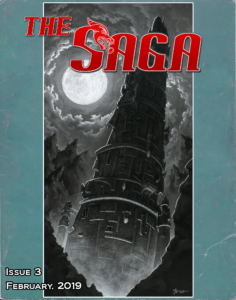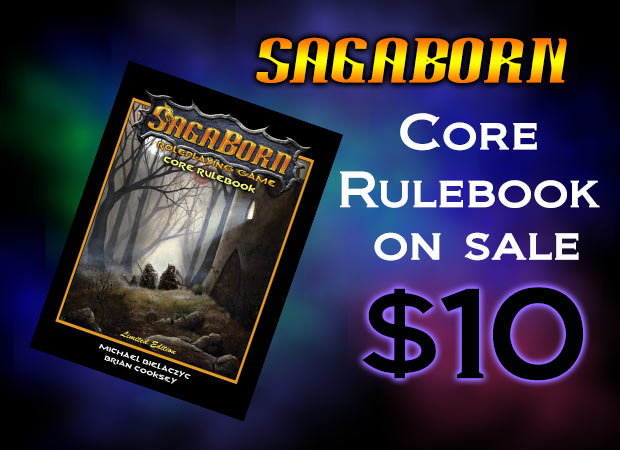
This last week I have been thinking a lot about how a GM gives the players the game they want. I feel the job of the GM is to make the game fun for all at the table. I have had a good run over my 15 years of running games. But all my past games had one thing in common, Game Masters were rare, so all my players were happy just to have a game. We had disagreements, and sometimes the game didn’t fulfill everyone’s needs each time, but I like to think we had fun. But I think a big part of that was that I was a reliable GM, and most people didn’t have may choices. I took a long break from gaming in general as I pursued my art career. I was making art for games, but not at a table playing. Then 4 years ago I started writing Pathfinder adventures and I found myself at the head of a table again. When I started Alpha testing SagaBorn, I was GMing more than I ever had before.
But last week an issue came up at the table and it had me reflecting on my Gamemastering as well as what a player comes to the table wanting. I realized that I spend the first session helping the players build characters. I send out emails building their back stories and goals. I build arcs for the characters and try to entertain them at the table. but one thing I hadn’t done, let the players know what my game might be like.
As a GM we try and adapt and keep the table interested. I loved using Roll20 as a battlemap with dynamic lighting and amazing tokens. But my players were unfocused during combat. So I tried miniatures and the whole table changed. But GMs have strengths and weaknesses, and if a player devotes time to your game, they should know how you tend to run your game.
To solve this issue, I created a Game Master’s Sheet, a quick PDf that you can fill out to let potential (or even current players) know how you tend to run your game. We often see if a player would fit in at the table, but with this, a player can see if they would feel fulfilled playing there.
Game Master’s Sheet PDF
The first sheet you click the box on the scale for how you see yourself for each entry. On the second sheet there are 5 boxes where you describe your answers from the first sheet.
For more about each section:
Sandbox or Planned Story
Do you build your story as the sessions continue or have a final goal in mind from the start? Sandbox is for those who like to offer their players an open world and often leads to a lot of improv at the table. A planned story can still branch out and allow for the players path, but there is often a single goal that you are leading the players towards.
Roleplaying or Out of Character
Some groups are great at staying in character throughout a session, talking in their player’s voice and only saying things that can be said in world. Others like to tell you what their characters are doing without getting in their complete mindset. what do you bring to the table? Lots of NPC’s that can talk for hours in a tavern, or small snippets that move the story forward?
Consequences
Do you like a story where the characters move through the world killing as they please and most are afraid to force them to live with their choices? Or do you like each choice to cause a ripple through the world where each decision can lead to an interaction down the road?
Type of Campaign
Dungeon delving and romping across the map. Cities are meant to be pickpocketed, and taverns are meant for drinking. Or does the King’s war effort reopening the factories cause the adventurers to align with a guild to stop the weapons from ending up in the wrong hands.
Combat
Some players like to hear the GM describe the combat and see the battle play out in their mind. Others like a grid on the table with mini’s. Which game do you prefer?
So everyone gets an idea of how to fill out the sheets, I have included my sheet below:


